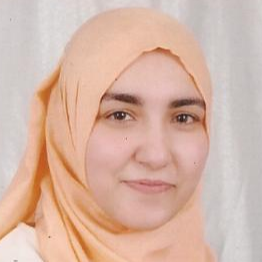
Faten A. Khalifa
Work place: Faculty of Computers and Information, Menofia University, Menofia, Egypt
E-mail: faten_a_khalifa@ci.menofia.edu.eg
Website:
Research Interests: Computer systems and computational processes, Computer Vision, Computer Graphics and Visualization, Virtual Reality, Image Processing
Biography
Faten A. Khalifa was born on March 8, 1987 in El-Behira, Egypt. She received the B.Sc. degree in information technology from Faculty of Computers and Information, Menoufia University, Menoufia, Egypt in 2008 with grade very good with first honor degree.
During 2008-2010, she was studying pre-masters in the information systems department in Faculty of Computers and Information, Menoufia University, Menoufia, Egypt. She has registered master in real time markerless tracking for augmented reality applications. Since 2009 till now, she is a demonstrator at the Faculty of Computers and Information, Menoufia University, Menoufia, Egypt. Her research interests are computer vision, image processing, object recognition, multimedia, mobile applications, virtual and augmented reality. Her email is: faten_a_khalifa@ci.menofia.edu.eg.
Author Articles
Local Detectors and Descriptors for Object Class Recognition
By Faten A. Khalifa Noura A. Semary Hatem M. El-Sayed Mohiy M. Hadhoud
DOI: https://doi.org/10.5815/ijisa.2015.10.02, Pub. Date: 8 Sep. 2015
Local feature detection and description are widely used for object recognition such as augmented reality applications. There have been a number of evaluations and comparisons between feature detectors and descriptors and between their different implementations. Those evaluations are carried out on random sets of image structures. However, feature detectors and descriptors respond differently depending on the image structure. In this paper, we evaluate the overall performance of the most efficient detectors and descriptors in terms of speed and efficiency. The evaluation is carried out on a set of images of different object classes and structures with different geometric and photometric deformations. This evaluation would be useful for detecting the most suitable detector and descriptor for a particular object recognition application. Moreover, multi-object applications such as digilog books could change the detector and descriptor used based on the current object. From the results, it has been observed that some detectors perform better with certain object classes. Differences in performance of the descriptors vary with different image structures.
[...] Read more.Other Articles
Subscribe to receive issue release notifications and newsletters from MECS Press journals